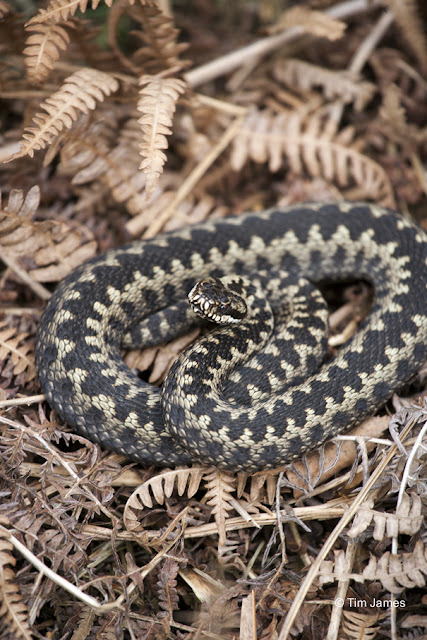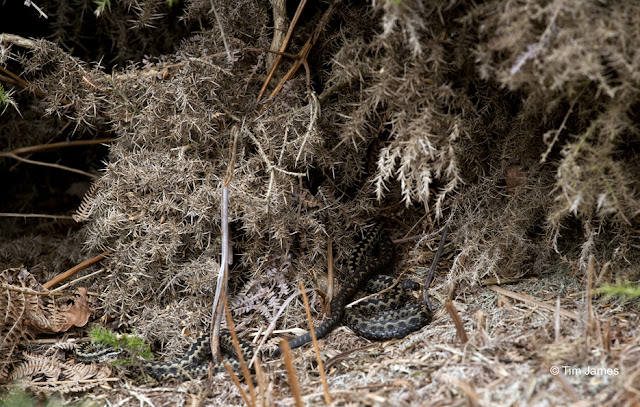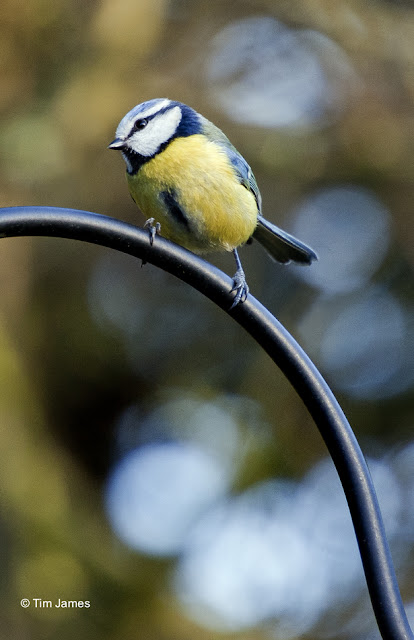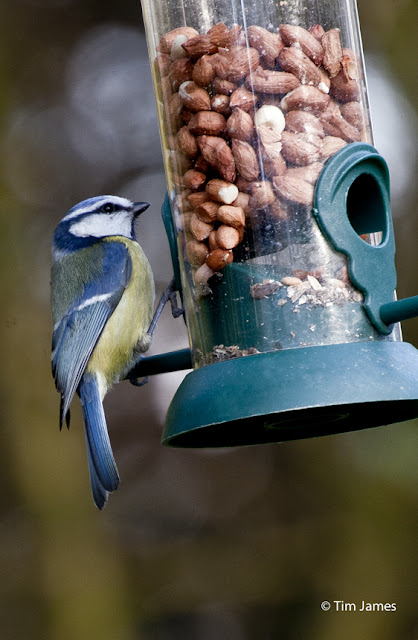I'm going to try over the next few days – weather permitting, of course – to properly capture a Bumblebee in flight. That may be creating a rod for my own back, but in the meantime here's an 'almost' shot.
Canon 1Ds MkII, 1/1,250 sec, f/2.8, 70mm at ISO of 800
20110331
20110329
Bumblebees
An hour to spare on a beautiful spring day and bumblebees feeding in numbers on the blossoming flowers in the garden. A perfect opportunity to get some shots of the bee's essential adaptations – the pollen sac, the long nectar-grabbing proboscis and those small, gossamer wings that – somehow – defy the laws of aeronautics…
All Canon 1Ds MkII, twinned with either a 24-70mm, 17-35mm macro or a 70-200mm lens
 |
| The hairs on the bee's thorax, abdomen and legs show particularly well in the spring sunshine |
 |
| This image shows the bee's tongue being used to gather nectar from the flower. The proboscis is folded under its head and body in flight, inside a sheath formed by the palps and maxillae. The tongue itself – deep inside the flower here – is covered in hairs at the tip. These hairs are porous, allowing molecules to pass through to receptor sites on sensory cells. This is how the bee is able to 'taste' and 'smell' its food sources. |
 |
| The network of veins in the structure of the bee's wing is highlighted in the spring sunshine. |
 |
| A close-up of the Red-tailed Bee's defence mechanism. That deep red seems to add to the sense that it could pack quite a sting. |
 |
| And another shot illustrating the bee's wing structure. The wings are made up of thin membranes of cuticle, stiffened and supported by veins. A chemical is transported through the veins throughout the bee's life to ensure the wings remain stiff but flexible and perfectly airworthy. |
20110327
Red Kites (Milvus milvus)
Labels:
Red Kite (Milvus milvus)
After an afternoon in The Chilterns photographing Red Kites, I started to make my way home as the sun began to set and skies once busy with the fork-tailed silhouettes of these impressive scavengers began to empty as the birds settled down to roost. But, as the light began to fail, there was one more shot to be had…
Canon 1Ds MkII, 1/320 sec, f/8, 400mm at ISO 400
Canon 1Ds MkII, 1/320 sec, f/8, 400mm at ISO 400
Woodpigeon (Columba palumbus)
Labels:
Woodpigeon (Columba palumbus)
This one's here because I like the simplicity of the composition, the strong diagonal line softened by a pristine sky and the late afternoon sunlight on the Woodpigeon's breast feathers.
Canon 1Ds MkII, 1/1,250 sec, f/8, 308mm at ISO 400
Lambs
A couple of images from a glorious early spring day principally spent photographing Red Kites in The Chilterns. It is a special part of England; gentle rolling hills, beech woods rich in wildlife and landscapes that offer appealing pictures at almost every turn. As the sun began to set and the kites retired for the evening, I came across a stunning valley that was home to a flock of sheep with lambs no more than a few weeks old. The first image, in particular, is, I think, a very English scene.
Both images Canon 1DS MkII.
1. 1/400 sec, f/8, 70mm at ISO 400
2. 1/400 sec, f/8, 140mm at ISO 400
20110326
Red Kite (Milvus milvus)
Labels:
Red Kite (Milvus milvus)
The re-introduction of the magnificent Red Kite (Milvus milvus) is a conservation success story. I was living in Oxfordshire when the programme to return this imposing scavenger to The Chilterns was in its infancy. With full protection in place, a slow recovery began but the population was first limited by myxomatosis, drastically reducing its rabbit prey, and then by persistent agri-chemicals. Then, a reintroduction project using young birds from Sweden began in The Chilterns in 1989. And this has proven so successful that this population has provided young birds for further reintroductions both elsewhere in England and in Scotland. Once a familiar site scavenging over London, Red Kites were driven to extinction in England by human persecution by the end of the 19th century. A small population survived in Wales, but there was little chance of these birds repopulating their original areas. Between 1989 and 1994, kites from Spain were imported and released into The Chilterns by the RSPB and English Nature. Red kites started breeding in the Chilterns in 1992 and now there are more than 300 breeding pairs in the area. I returned to the area a few years ago as a mature student studying zoology at Reading University and the change in the bird's fortunes was evident, witnessed by skies at some times darkened with swirling crowds of kites soaring on updrafts. When I wasn't attending lectures (and, I confess, often when I should have been) I would head to the areas where I knew I would see England's vulture in numbers. Yesterday, I had the chance to do the same and captured a number of images of this powerful, elegant raptor…
All Canon 1Ds MkII
Sources:

20110323
Red-tailed Bumblebee (Bombus lapidarius)
I adore happy accidents. Without a macro lens on me, I knew I'd struggle to get a decent shot of this gorgeous Red-tailed Bumblebee. But what I hadn't bargained on as I essentially missed the shot I was after (the bee in flight) was this image – which has not been cropped in any way – of the rotund bee and its tiny, seemingly wholly inadequate legs disappearing out of the frame with such charm. The Red-tailed Bumblebee is a common visitor in many gardens, but this was my first of the spring. This one was harmless enough, but in the vicinity of its nest the Red-tailed is somewhat more agressive than most other species of bumblebee and is quite happy to sting any intruder. It's entirely black, except for the red tail, the intensity of which varies from striking deep red through to orange. The colony remains rather small and rarely ever comprises more than 300 individuals. Normally the nest is built underground, though sometimes in openings in walls, birds nests or nesting boxes. The Red-tailed Bumblebee visits well over 200 species of flowers, including many exotic garden species and is also known as the Stone Bumblebee or Large Red Bumblebee.
Canon 1Ds MkII, 1/160 sec, f/2.8, 70mm at ISO 400
Canon 1Ds MkII, 1/160 sec, f/2.8, 70mm at ISO 400
Source: GardenSafari.net
20110322
Pied Wagtail (Motacilla alba)
Labels:
Pied Wagtail (Motacilla alba)
Absolutely nothing special about this image; the low light and distance from the Wagtail allowed for no detail. I simply enjoyed the composition – the bird's sweet little strut as it scoured the lawn for small insects and the looming shadows of early evening.
Canon 1Ds MkII, 1/800 sec, f/8, 400mm at ISO 320
Canon 1Ds MkII, 1/800 sec, f/8, 400mm at ISO 320
20110320
Adder (Vipera berus) – Norfolk
Labels:
Adder (Vipera berus)
I have become fascinated by Adders (Vipera berus) and – as my knowledge of them has improved – I've also become much more adept at finding them. And with a colony of the reptiles just 10 minutes or so from the house, I've been able to make time to take plenty of shots, but also simply to sit and observe them. With the males and females having hibernated for around 150 and 180 days respectively – venturing from their burrows only once the ambient temperature rises above 9ºC – they now spend much of their time basking in whatever sunshine is available. For this reason, I find the best time to spot them is in the mid-mornings, when the sun has started to warm up the ground and is providing enough heat for the adders themselves to recharge their metabolic batteries. I've also included a few context shots to illustrate how the snakes prefer – at least at this time of the year when the sun is still relatively weak – to do their basking close to dense gorse or shrubs into which they can flee when disturbed.
Spot the Frog
I was photographing this pond which was simply brimming with frog spawn and – concentrating on not falling in and also on exposing the shot correctly in the face of the first harsh sunlight of spring – I completely failed to notice that throughout I was being watched by a frog keen to safeguard its watery maternity ward of potential offspring. Scroll down just a little if you can't see its watchful eyes…
Canon 1Ds MkII, 1/800 sec, f/8, 200mm at ISO 400
20110319
Minotaur Beetle (Typhaeus typhoeus)
The Minotaur Beetle (Typhaeus typhoeus) is a spectacular dung beetle of heaths, moorlands and mountains, this male shot in an area of managed heath in North Norfolk. The males use the long prongs on the thorax to compete for mates. Their principal food source is rabbit droppings. How I wish I'd had a macro lens with me at the time, this image failing to capture the beetle's impressive armour.
Canon 1Ds MkII, 1,1,000 sec, f/3.5, 70mm at ISO 640
White-rot Fungus
I saw this beautiful specimen of fungi while hunting for adders. The rings of colour in the body of the organism were as vivid as if they had been painted on; presumably the result of the changing make-up of the lignin being digested from the birch stump. My knowledge of fungi is poor, however, so any help in establishing whether this is an example of White Rot fungi (Trametes ochracea) would be very much appreciated.
Canon 1Ds MkII, 1/1,000 sec, f/2.8, 62mm at ISO of 640
Canon 1Ds MkII, 1/1,000 sec, f/2.8, 62mm at ISO of 640
20110318
Adder (Vipera berus) – Norfolk
Labels:
Adder (Vipera berus)
This afternoon I spent the most wonderful couple of hours searching for Adders in an area of North Norfolk known as the Holt Lowes. The area – a Site of Special Scientific Interest (SSSI) and a Special Area of Conservation (SAC) – is a stronghold for Adders, the habitat a perfect mix of heath, gorse, some bog and sand. On setting out, I wasn't too hopeful; the day was cool and the sun was struggling to show behind a blanket of light grey cloud. Soon, however, it broke through and conditions became perfect, albeit that it was still only mid-March and these cold-blooded reptiles need a lot of warmth to get going. This is going to sound weird or just plain obvious, but I find the key to spotting wildlife is to know what you're looking for. By that I mean having a fair idea of shape, colour, posture, probable choice of location and, of course, size. The other truesim is that once you've seen something once and the brain stores the image, it's a lot easier from that point onwards. I have walked this area a hundred times and – not consciously looking for snakes – had never seen one. This time, I told myself not to look for a line (the chances of seeing a moving snake were, I suspected, slim) but a ring or circle (the logic being that my best chance would be to find an Adder basking in the first ray's of the sun in an effort to generate enough warmth to start hunting. Though venomous, Adders are not aggressive and are also less inclined to disappear to disappear into the undergrowth unless threatened; it is possible safely to get quite close without disturbing them. And so it proved – within 20 minutes, 10 metres ahead of me I did indeed pick out a circle of darkness against the lighter mix of long grasses and ferns and was able to take these shots. I went on to find four more: three alive and one dead, with two puncture wounds a few inches below the head.
Both Canon 1DS MkII, 1/2500 sec, f/4, 200mm at ISO 640
20110317
Bumblebee
I love serendipity. Earlier today, Frank of The Early Birder fame, posted a message that he'd seen quite a few more Bumblebees out and more active over the last few days, the daytime temperatures having lifted just enough to get them going. I then spotted this large and beautiful Bumblebee on the gravel drive next to my car. It was barely moving and, when very gently touched, was disinclined or unable to move off. Clearly, it needed warming up a little and I was able to achieve two ends: I would be able to get these hurriedly taken shots and the bee would get the chance to get some warmth into its muscles. I also took a moment to do a little research and hadn't realised that the bee's buzzing is not, in fact, caused by the movement of its wings, but by the bee actually vibrating its flight muscles. And – rather like it's best to allow a car engine to warm up on a cold morning – they must do this if the ambient temperature is low before they are able to take to the air. To achieve this they can do something rather cool – like a car can be revved in neutral, so the the Bumblebee is able to de-couple its wings from the muscle attachments, so it can warm up the thoracic powerhouse ready for flight. Rather, I imagine, like us being able to shiver in overdrive. Indeed, so effective is this adaptation in the bee that internal temperatures around the flight muscles can reach a staggering 30ºC (or 86ºF in old money). I should also add that, after a few minutes under a lamp in the office, the bee did indeed manage to reach optimum temperature again and, returned to the honeysuckle outside, flew off with gusto.
Red Panda (Ailurus fulgens)
Labels:
Red Panda (Ailurus fulgens)
One of my favourite creatures and sadly so under threat. These shots are more from a series taken earlier in the year. I include them here with another reminder that to learn more about the plight of these wonderful animals, whose habitat and food resources are being destroyed at an alarming rate, take a look at: http://redpandanetwork.org/
All Canon 1Ds MkII
1. 1/100 sec, f/8, 400mm at ISO 640
2. 1/125 sec, f/8. 352mm at ISO 640
3. 1/100 sec, f8, 400mm at ISO 640
Gossiping Otters
Labels:
Otter
Yes, I know I've written before that I don't like anthropomorphism in wildlife photography, but it can sometimes be hard to resist. These Otters just look as if they are catching up on a few things, with one seeming to whisper to the other.
Canon 1Ds MkII, 1/125 sec, f/8, 326mm at ISO 400
Canon 1Ds MkII, 1/125 sec, f/8, 326mm at ISO 400
Emu in the rain
Labels:
Emu
This Emu – drenched and seemingly miserable – was intrigued by the camera lens, providing me with a nice shot of its stunning eyes. I also like the rain-sodden curl of its feathers and the grains of sand and grit that cover its head. If only the light had allowed a slightly larger depth of field.
Canon 1Ds MkII, 1/500 sec, f/2.8, 63mm at ISO 400
Canon 1Ds MkII, 1/500 sec, f/2.8, 63mm at ISO 400
Bactrian Camel
Labels:
Bactrian Camel
A zoo shot, but I just love the thick, unctuous and pretty foul-smelling saliva being produced by this Bactrian Camel and the detail in its fine whiskers.
Canon 1Ds MkII, 1/320 sec, f/9, 290mm at ISO 640
Canon 1Ds MkII, 1/320 sec, f/9, 290mm at ISO 640
20110316
First bees of spring
In the garden, the honeysuckle, daffodils and crocuses are either in flower or just starting to show and the arrival of colour and scent for the first time in months has brought out the occasional Bumble Bee. This one declined to dwell very long, the light was poor and – without a macro lens on the Canon body – I wasn't able to get very close. But the composition still works, I think, and it does feel good to contemplate that warmer weather, brighter and longer days and, of course, an abundance of visitors to the garden are really not that far away.
Canon 1Ds MkII, 1/250 sec, f/4, 200mm at ISO 400
Canon 1Ds MkII, 1/250 sec, f/4, 200mm at ISO 400
20110314
Blue Tits
Labels:
Blue Tit (Cyanistes caeruleus)
Photographing garden birds is my default mode; it's what I do whenever the chance presents itself and more complicated or involved shooting is not a possibility. If I get a spare 15 minutes from work in the office, I take my camera into the garden and see what's around. If I'm at my desk and notice the light has changed, I do the same. These shots were all taken within 30 minutes or so, when the sun was just starting to dip over the horizon and a beautiful pale glow was being cast over the garden. Just humble, common or garden Blue Tits, but no less captivating for that.
All Canon 1Ds MkII, 1/60-1/125 sec, f/8, 400mm at ISO 400
All Canon 1Ds MkII, 1/60-1/125 sec, f/8, 400mm at ISO 400
Sparrowhawk
Labels:
Sparroew,
Sparrowhawk (Accipiter nisus)
This Sparrowhawk made a meal of a Woodpigeon in my garden, leaving its tell-tale scattering of the plucked breast feathers close by. I noticed the carcase when I went out to top up the bird feeders and, while I was seated on a bench watching robins, tits and finches taking peanuts and seeds, the Sparrowhawk returned for seconds. As I slowly raised the camera, it predictably took to the wing. But the bird had returned at least once, so I thought it might be willing to do so again. I picked up the carcase and – because Sparrowhawks are generally reluctant to eat in the open – I placed it toward the edge of the garden, close to thick hedgerows and, a little further on, a large wood. This, I hoped, would allow the raptor to wait on a branch on high and come in again when it felt the coast was clear and, if it felt more comfortable, drag its meal into the undergrowth. Unfortunately the plan worked rather too well; the Sparrowhawk did indeed return, but before I was hidden and settled. As I attempted to get close enough for a decent shot, it flew off once more, but not before I had managed to fire off just a few frames. Now, the pigeon carcase is back in position. Let battle commence…
Canon 1Ds MkII, 1/80 sec, f/8, 400mm at ISO 200
Canon 1Ds MkII, 1/80 sec, f/8, 400mm at ISO 200
20110311
The sky at night
Something just a little different, but the night sky over Norfolk was too good to miss. The exposure time was a matter of guesswork to begin with, but I settled on an intermediate 15 seconds at f/4.5. With the camera steady on a very robust tripod, the two settings together allowed for the moon not to dominate, the house lights to gently illuminate the brickwork and doors of the derelict cottage nextdoor and the stars to shine out just enough. I'm really pleased with the results. PS: I've kept this image large on screen – if it proves to be too big, post a message and I'll drop the size down.
Canon 1Ds MkII, 15 sec, f/4.5, 17mm at ISO 500
Canon 1Ds MkII, 15 sec, f/4.5, 17mm at ISO 500
20110310
The frustrations of this passion of ours
Walking the dogs this morning, I was struck by how frustrating sometimes this passion we share for photography and wildlife can be. I spotted a family of buzzards – a mother and two recent fledglings, I believe – hunting around a copse close to the house. But without my camera and needing to be back in the office, there was nothing I could do except to enjoy the spectacle for a few minutes before heading off. The early morning sun was out and the light would have been perfect to capture some shots of these stunning birds. But by the time other more mundane matters had been sorted out, time had marched on, clouds had returned once again and the light was poor. I could, of course, resolve to carry a camera with me at all times (in reality I usually do), but to do the buzzards justice would have required a substantial lens and more than a little patience. In other words, not a snap shot. Ah well, maybe another time...
20110305
Black-headed Gull
I'm a great fan of these gregarious, bold and sometimes downright cheeky birds. Photographing them is always a toss-up between a frame filled with fantastic action or, often enough, a frame empty apart from blue sky or a blur of wings. They're quick on the wing – able to turn on a sixpence – and in the water (at least when there is food about) they are frantic in the desire to gobble up whatever they can. In the first shot, the bird on the left had just stolen a chunk of bread from the other; it can be seen just about to disappear down the gull's throat. In the second, I simply like the way the gull caught by the camera's motion focus appears to be looking straight down the barrel of the lens.
Canon 1Ds MkII
1. 1/800 sec, f/8, 200mm at ISO 400
2. 1/1,600 sec, f/11, 200mm at ISO 400
Canon 1Ds MkII
1. 1/800 sec, f/8, 200mm at ISO 400
2. 1/1,600 sec, f/11, 200mm at ISO 400
Subscribe to:
Posts (Atom)










































